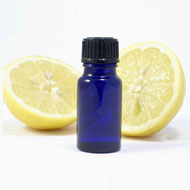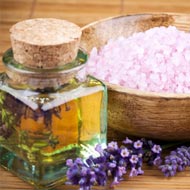- Bergamot Essential Oil
- Black Pepper Essential Oil
- Cajeput Essential Oil
- Camomile Oil
- Cedarwood Essential Oil
- Citronella Essential Oil
- Clary Sage Essential Oil
- Coriander Oil
- Lavender Essential Oil
- Rose Oil
- Eucalyptus Oil
- Fennel Essential Oil
- Frankincense Essential Oil
- Geranium Oil
- Grapefruit Oil
- Essential Oil Jasmine
- Juniper Berry Oil
- Lavandin Oil
- Lavender Oil
- Lemon Oil
- Lemongrass Oil
- Mandarin Oil
- Melissa Oil (Officinalis)
- Cypress Oil
- Aroma Essential Oil
- Aromatherapy And Essential Oils
- Avocado Oil Benefits
- Oil Healing Properties
- Essential Lemon Oil Health Benefits
- Lemongrass Essential Oil Health Benefits
- Mandarin Essential Oil Health Benefits
- Marjoram Essential Oil Health Benefits
- Massage Body Oils Health Benefits
- Melissa Essential Oil Benefits
- Essential Myrrh Oil Health Benefits
- Natural Essential Oil Health Benefits And Uses
- Neroli Essential Oil
- Niaouli Essential Oil
- Essential Oils And Uses
- Organic Essential Oils
- Patchouli Essential Oil
- Peppermint Essential Oil
- Petitgrain Essential Oil
- Rosemary Essential Oil
- Sandalwood Essential Oil
- Sandalwood Massage Oil
- Sunflower (Black) Seed Oil
- Tangerine Oil
- Tea Tree Oil Uses
- Thyme Essential Oil
- Vetiver Oil
- All Natural Oil
- Olive Oil Products
- Almond Oil For Hair,Massage,Cooking And Aromatherapy
- Best Olive Oil In The World - Reviews
- Avocado Oil
- Aromatherapy Essential Oils And Blends
- Essential Oils Aromatherapy
- Catnip Essential Oil
- Spikenard Essential Oil
- Chocolate Essential Oil
- Carrot Seed Essential Oil
- Tuberose Essential oil
- Manuka Essential Oil
- Yarrow Essential Oil
- Galbanum Essential Oil
- Linden Blossom Essential Oil
- Oregano Essential Oil
- Ravensara Essential oil
- Ylang Ylang Essential Oil
- Wintergreen Oil
- Helichrysum Oil
- Clove Oil
- Spearmint Essential Oil
- Pine Essential Oil
- Lemon Verbena Essential Oil
- How Different Are Mint Oil And Peppermint Oil?
- Vegetable Oils
Lime Essential Oil
The botanical name for lime essential oil is Citrus aurantifolia. Other names for lime essential oil include Citrus medica and Citrus latifolia.
Lime essential oil is extracted from the rinds of sour lime varieties such as Mexican or West Indian lime. The most common name for this golf ball sized fruit is Key Lime.
Physical Properties
- Abundant acids in the fruit produce a sharp, fruity citrus note in its essential oil.
- Lime oil ranges from pale yellow to light green in color, depending on the varieties of lime used, how long it has been aged, or the process used in distillation of the essential oil.
Chemical Composition
Distilled lime essential oil contains chemical components such as a-pinene, B-pinene, myrcene, sabinene, y-terpinene, limonene, terpinolene, nonanal, octanal, pentadecanal, tetradecanal, trans-a-bergaptene, B-bisabolene, caryophyllene, neryl acetate, geranial, geranyl acetate, linalool, and a-terpineo.
Origin
Lime can be traced to warm tropical regions in Asia. Mexico, West Indies and parts of United States are now large lime producing regions. Presently, Mexican lime oil tops the production of lime essential oil, followed by Peru, Cuba and India. The use of lime juice as medication can be traced to sailors, at sea for long periods of time, using lime juice abundant in Vitamin C to prevent scurvy.
How does one extract lime juice?
Two extraction methods used to produce lime essential oil.
- Cold compression: Cold compression or expression uses the unripe peels and subjects them to duress, thereby extracting the essential oils.
- Steam distillation: Distillation uses vaporization and condensation to separate water and oil from the whole ripe fruit or peel.
Precautions
- Lime oil extracted through cold expression tends to be phototoxic in strong sunshine. Individuals who experience photosensitivity should avoid lime essential oil if they are exposed to sunlight for long periods.
- Lime essential oil obtained through steam extraction is not toxic, neither an irritant. However, studies have not been conducted on pregnant and nursing women. It is best to avoid essential oils in these conditions.
Benefits
- Lime oil acts as an antibacterial agent fighting off infections.
- Respiratory disorders such as bronchitis, asthma, and sinusitis may also find relief through lime essential oil.
- The astringent effect of lime essential oil finds its use in cosmetic products aimed at treating acne and acne scars.
- Lime essential oil may repel mosquitoes and other bugs making it an important ingredient in citronella candles and topical lotions that repel mosquitoes.
Therapeutic Applications
- The fresh citrus smell of lime essential oil activates your digestive organs.
It is used in appetite stimulating dietary supplements. - Inhaling lime essential oil can fight fatigue and depression.
- Its disinfectant properties protect food spoilage, cleanse cuts and wounds and protect the skin.
- Antioxidant properties of lime essential oil can help reverse signs of aging and fight free radical damage.
- Other therapeutic properties of lime essential oil are antimicrobial, antifungal, antiallergenic, anti-inflammatory, and anti-carcinogenic.
Infact, cancer and tumor treatments now include aromatherapy as a complementary or alternative medicine to deal with treatment and stress of the disease.
Blends
Lime essential oil blends particularly well with other essential oils such as Ylang ylang, neroli, lavender and sage.
How to Make Lime Oil?
Start with varieties such as Key limes or Persian limes. Add about two cups of odor neutral oil such as olive, grape seed or safflower to a container.
You can use either cold compression or the heated oil method. In the cold compression method, zest the lime peel, ensuring that you do not include the white pith, which can turn your essential oil bitter. Immerse zest and Kaffir lime leaves, if available, into container with odor neutral oil. Kaffir lime leaves add a floral note to the essential oil. After a week, strain through a fine mesh sieve and relocate essential oil to a dark, cool area to age.
If using the heated method, bruise the lime zest and leaves and simmer in odor neutral oil. Remove from heat and let it steep for for a few hours. Strain the leaves and zestandlet cool. You may use the zest and leaves as garnish in cooking. Move lime oil to a cool, dry area preferably a refridgerator. It will last up to two weeks in an unrefrigerated area.



